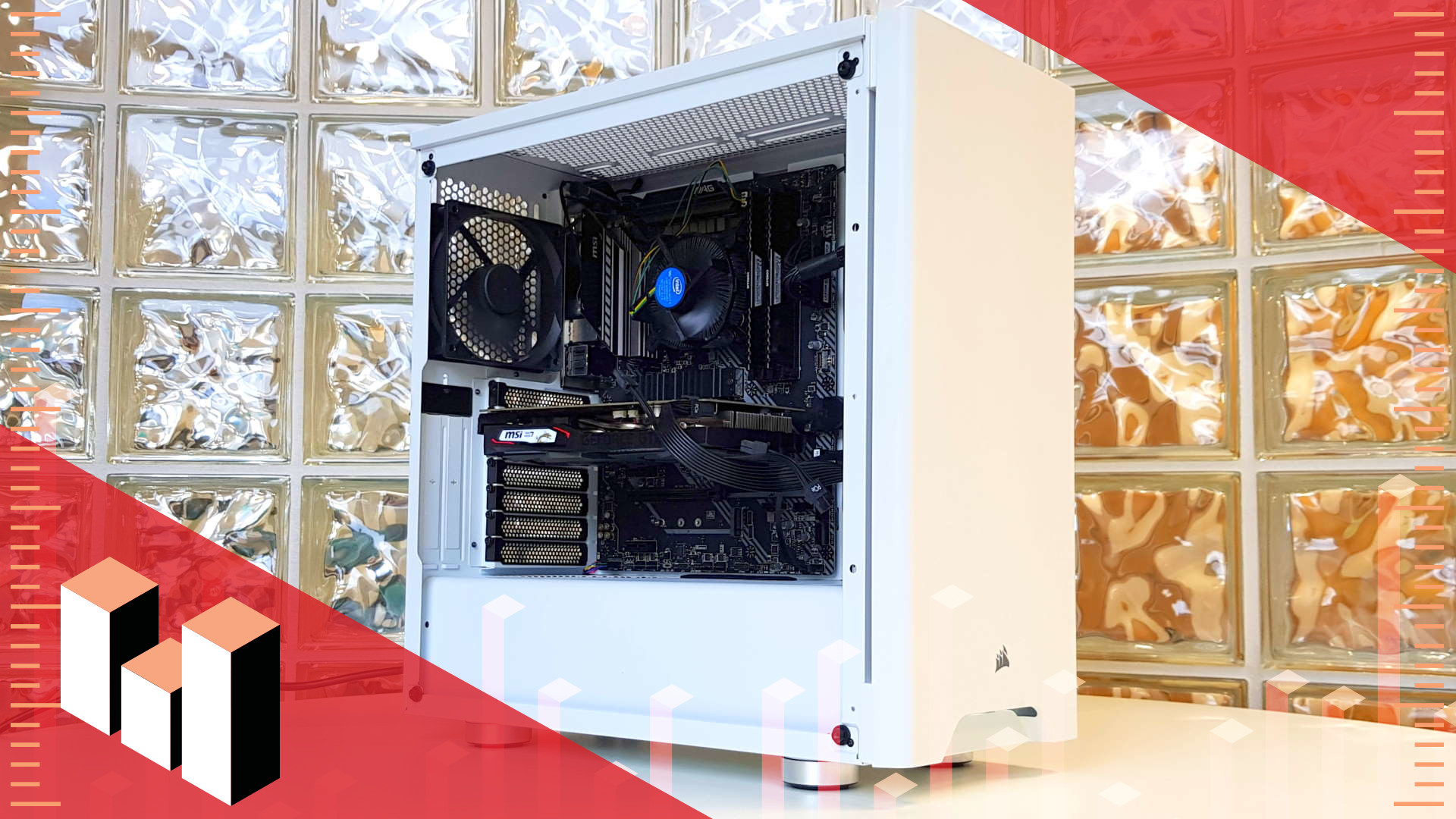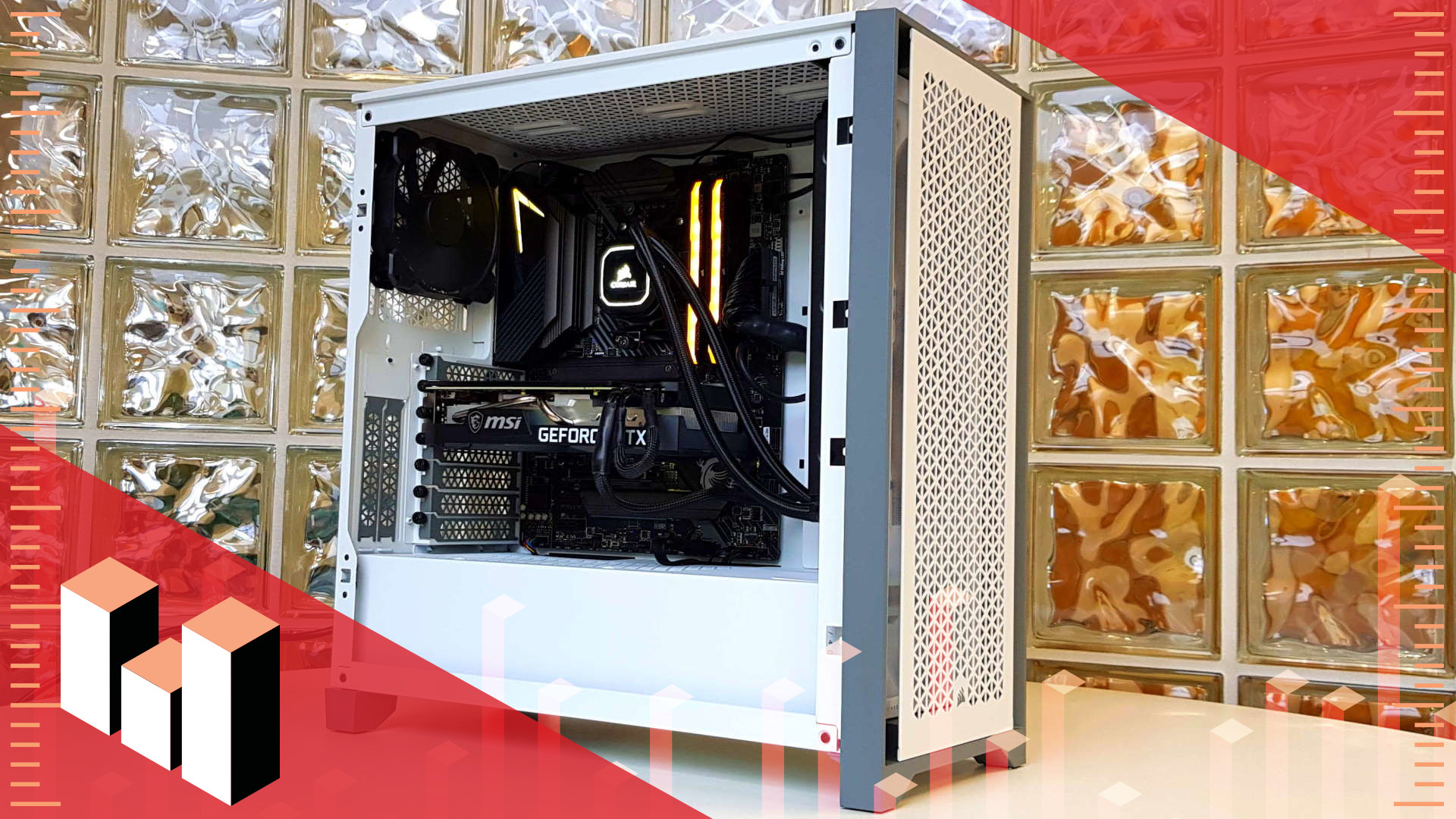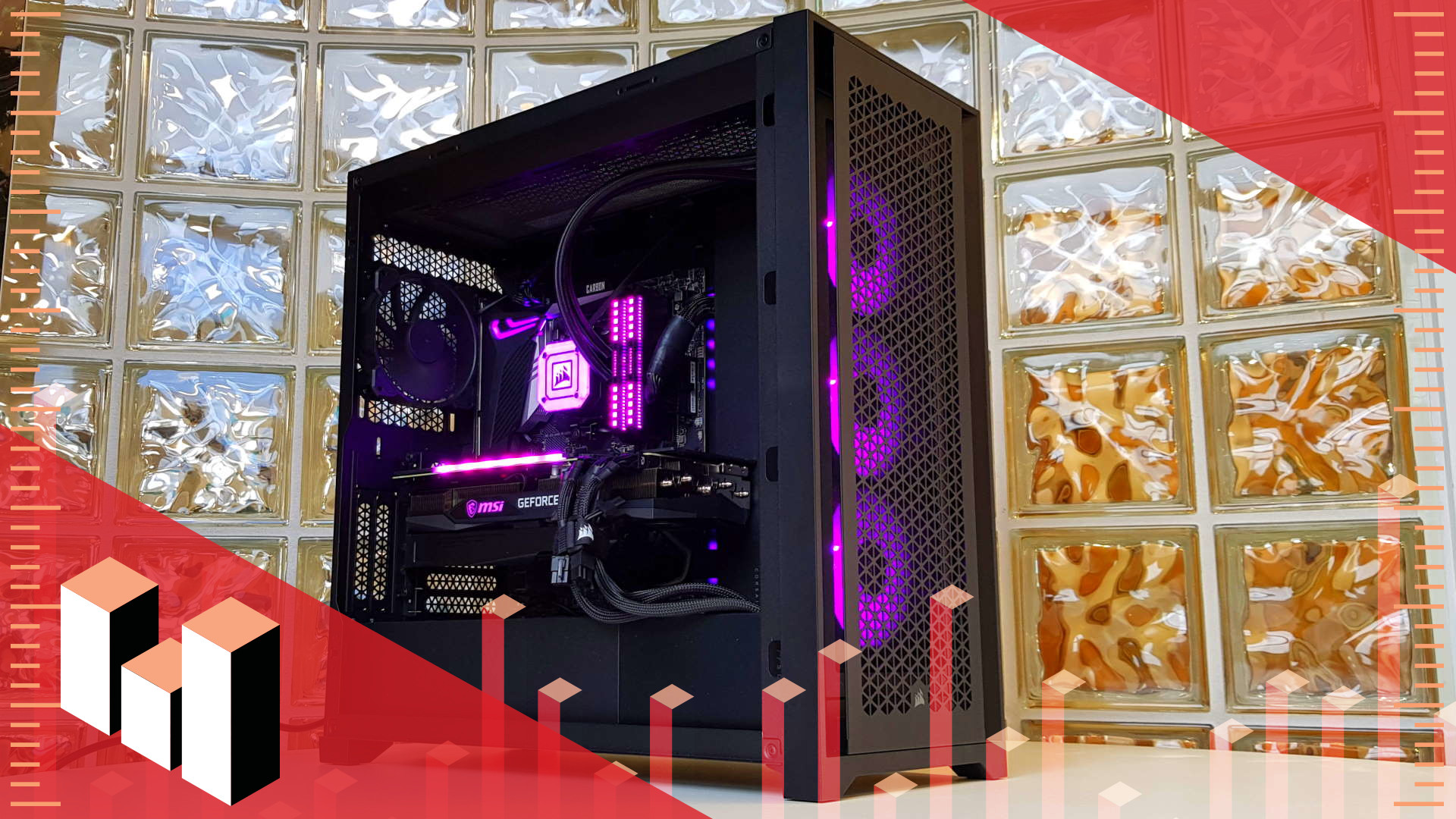Say hello to the new PC Gamer performance testing rigs
These are the systems by which all this year's games will be judged.

Testing a new game's performance, in any meaningful way, is a challenge when it comes to PC gaming. With a platform as broad as ours, there are so many different permutations of parts and software that trying to give you an idea of how a new game might perform on your very personal computer is almost an impossible mission.
The way we're planning on doing it this year is a little different from how we've approached it in previous years. We're never going to be able to hit your exact build, so we've created a set of representative rigs to illustrate how each new game release we test performs on a budget, mid-range, and high-end gaming PC.
Which we know isn't easy in these silicon-starved times of ours; we've had to beg, charm, and borrow parts from all over to pull together these machines. MSI has shipped us the graphics cards and motherboards, AMD and Intel have provided the processors, we've plundered the PC Gamer kit cupboard for storage, and Corsair has provided the rest.
Unfortunately, the chip shortage means that it's unlikely you'll be able to build the same machines, at least not for a while. But we wanted to give you an idea of how well each new game we cover has been coded for the PC platform, so we've built a $700 machine to represent a last-gen budget build, a $1,600 system with the latest mid-range component marvels, and a high-end $3,000 dream machine.
Right now these prices are based on what feels like a fantasy world of MSRP components, but I've got to hope we eventually get back to those times. Otherwise, I don't know how I'm going to keep getting out of bed in the morning...
We'll be kicking off this week with a dive into the best settings for Resident Evil Village, but we'll also be using these new PC Gamer machines as the standard for much of our testing going forward. New kit will come and go, but these machines will be the benchmark against which all of this year's games will be judged.
PC Gamer Arctic Stealth

CPU: Intel i5 10400F w/heatsink and fan
Motherboard: MSI B460 Tomahawk
Graphics card: MSI GTX 1650 Super Gaming X
Memory: Corsair LPX 8GB DDR4-2400
Storage: Samsung 500GB 870 EVO
PSU: Corsair CX550
Case: Corsair 275R
The $700 budget build
The biggest gaming news, reviews and hardware deals
Keep up to date with the most important stories and the best deals, as picked by the PC Gamer team.
The RBG-free Arctic Stealth machine is arguably my favourite of the builds we've put together for testing this year. It's not the most powerful system, but that MSI GTX 1650 Super Gaming X is more capable than many give it credit for. Backing that up is the supremely impressive Intel Core i5 10400F, a six-core, 12-thread CPU that balances affordability with genuine gaming and creative power.
That chip sits inside the MSI B460 Tomahawk, using Intel's budget chipset to great effect, with all the key features you could want from a gaming motherboard. That and an altogether chill approach to RGB illumination.
We've still got SSD storage working its magic, thanks to an affordable 500GB SATA-based drive from Samsung, and Corsair's LPX memory does a great job of keeping the data flowing too.
PC Gamer Mellow Yellow

CPU: AMD Ryzen 5 5600X
Cooler: Corsair H100x
Motherboard: MSI B550 Gaming Carbon WiFi
Graphics card: MSI RTX 3060 Ti Ventus 2x
Memory: Corsair Vengeance RGB 16GB DDR4-3200
Storage: Samsung 980 1TB
PSU: Corsair RM850x
Case: Corsair 4000D
The $1,600 mainstream rig
The soothing golden tones of the Mellow Yellow rig belies the power residing inside the simple white Corsair 4000D chassis. The MSI RTX 3060 Ti Ventus x2 might be the fourth tier of Nvidia's Ampere gaming lineup—at least for now—but it's a mainstream GPU that's able to deliver a knock out blow to the RTX 2080 Super from the last generation of graphics cards.
MSI's B550 Gaming Carbon Wi-Fi brings AMD's mainstream motherboard chipset to the party, and with the Ryzen 5 5600X CPU that delivers a huge amount of future-proofing to the build with PCIe 4.0 support. Though the Samsung 980 SSD is only a PCIe 3.0 drive it's still a decent, speedy option for the money.
Stick some colourful liquid cooling into the mix, via the Corsair H100x chip-chiller, and the LED-strewn Vengeance RGB memory, and the Mellow Yellow aesthetic is complete. It will also deliver serious gaming performance from within its unassuming chassis.
PC Gamer Hot Pink

CPU: AMD Ryzen 9 5900X
Cooler: Corsair H150i Elite Capillex
Motherboard: MSI X570 Gaming Pro Carbon WiFi
Graphics card: MSI RTX 3080 Gaming X Trio
Memory: Corsair Dominator 32GB DDR4-3600
Storage: Sabrent Rocket 4 2TB
PSU: Corsair HX1000
Case: Corsair 5000D
The $3,000 dream machine
Nothing says high-performance gaming to me more than a hot pink colourway, and thus the high-end Hot Pink gaming system is born. Packing both our picks for the best gaming CPU and best graphics card into one build we've got the outstanding AMD Ryzen 9 5900X processor ably supporting the MSI RTX 3080 Gaming X Trio.
The 12-core, 24-thread AMD CPU can get toasty, so the triple-fan Corsair H150i Capillex not only adds to the overall illumination experience but also keeps things pleasingly chill too. The 32GB of Dominator DDR4-3600 memory also plays its part in the cerise stylings.
Thanks to the MSI X570 Gaming Pro Carbon Wi-Fi motherboard we get PCIe 4.0 support in this build too, and the capacious Sabrent Rocket 4 2TB drive thrives on that interface meaning we have space to grow our gaming library and the speed to jump into the benchmarks at a moment's notice. We do so love our benchmarking…
These are the new PC Gamer test rigs then, so when we're talking about the budget, mid-range, and high-end standards we test against, you know what we mean.

Dave has been gaming since the days of Zaxxon and Lady Bug on the Colecovision, and code books for the Commodore Vic 20 (Death Race 2000!). He built his first gaming PC at the tender age of 16, and finally finished bug-fixing the Cyrix-based system around a year later. When he dropped it out of the window. He first started writing for Official PlayStation Magazine and Xbox World many decades ago, then moved onto PC Format full-time, then PC Gamer, TechRadar, and T3 among others. Now he's back, writing about the nightmarish graphics card market, CPUs with more cores than sense, gaming laptops hotter than the sun, and SSDs more capacious than a Cybertruck.

